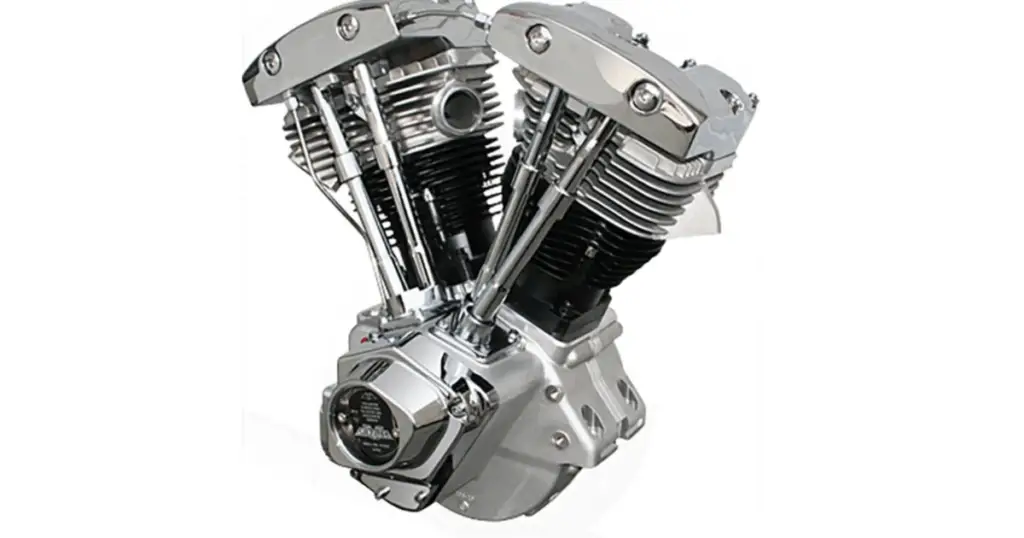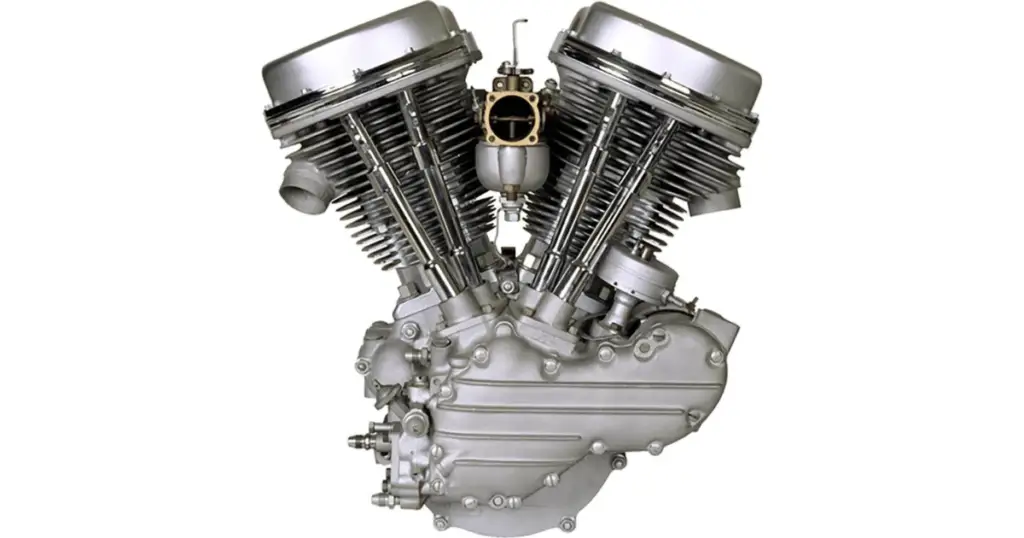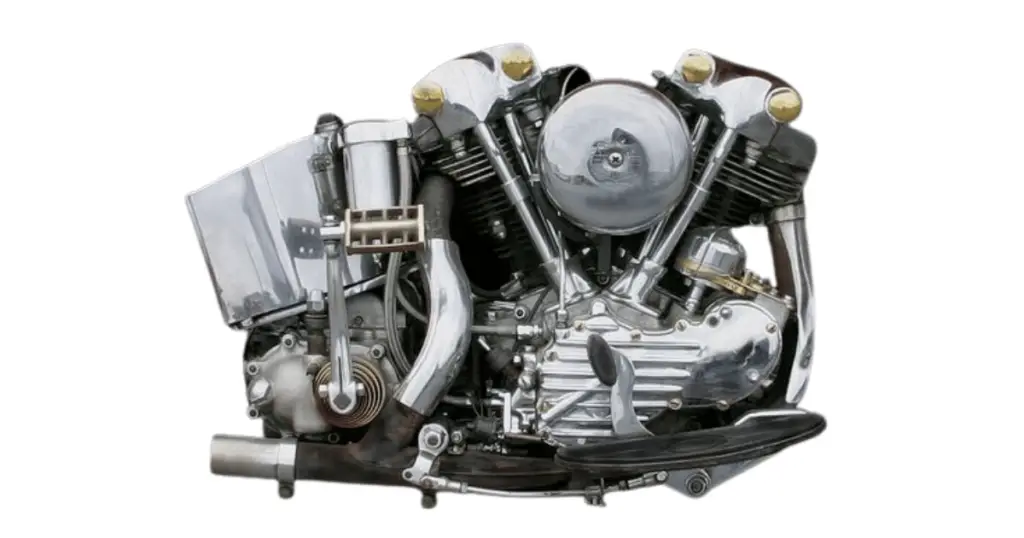Venturing into the world of motorcycles, particularly Harley-Davidson, you might come across some interesting terms like Shovelhead, Panhead and Knucklehead. These aren’t just random expressions; they represent the distinctive engines that have powered Harley Davidson motorcycles over the years. The names are derived from the unique shapes of the rocker boxes that cover the engines’ cylinder heads. This article aims to provide a comprehensive insight into the Panhead vs Knucklehead vs Shovelhead debate, shedding light on their history, unique features, and the distinctions that set them apart. Ready? Let’s get moving before the argument comes to a head…
So, What’s Up With All These Heads?
Motorcycle enthusiasts, specifically Harley-Davidson aficionados, have been known to use these terms with an air of reverence and nostalgia. But what do they denote? They are nicknames given to specific Harley-Davidson motorcycle engines based on the shape of their rocker box covers.
What Is The Shovelhead?
The Shovelhead is a Harley-Davidson motorcycle engine that was produced from the mid-1960s until the early 1980s. The name “Shovelhead” was inspired by the curved shape of the rocker covers, resembling the blade of a coal shovel when the cylinder head is viewed from the side.

When Was It Released?
The Shovelhead engine was introduced in 1966 and continued production until 1984. It effectively laid the foundation for the Evolution engine to follow in the firm’s next engine iteration.
Related: Shovelhead Years to Avoid Like The Plague (Here’s Why)
What Made It Different?
The Shovelhead engine was designed to provide more power to accommodate heavier motorcycles with electric start and rear suspension, a similar philosophy to Harley’s big twin series to follow shortly after. The engine’s shallow combustion chambers facilitated better cooling and functioned optimally at higher compression ratios to allow for more power when compared to earlier engine designs. Despite several updates over the years, identifying a Shovelhead can be challenging as its shape doesn’t resemble a traditional shovel but rather an inverted coal shovel.
What Is The Panhead?
The Panhead engine was produced from 1948 to the mid-1960s, replacing the Knucklehead. The engine’s valve covers, appearing like small cake pans, were the inspiration behind its name.

When Was It Released?
The Panhead engine was presented to the world in 1948 and was produced until 1965.
What Made It Different?
The Panhead was designed to enhance oil containment, an issue prevalent in its predecessor, the Knucklehead. However, despite the innovative design, Panheads still experienced top-end oil leaks.
Related: Shovelhead vs Panhead: A Harley Davidson Engine Showdown
What Is The Knucklehead?
The Knucklehead is the oldest of the three engines, produced from 1936 to 1947. The term “Knucklehead” was born from the engine’s distinctive cylinder heads, which resembled the knuckles of a clenched fist.

When Was It Released?
The Knucklehead engine was launched in 1936 and ceased production in 1947.
What Made It Different?
Originally referred to as “OHV” (Overhead Valve), the Knucklehead was the first Harley-Davidson engine to place the valves at the top of the cylinder, controlled by rockers contained within the cylinder head. This innovative overhead valve design led to the nickname “Knucklehead,” which has since become a staple in the Harley-Davidson lexicon.
Read next: A Complete Overview of The Renowned AMF Harley Years
Which Engine Is Most Desirable These Days?
The desirability of these engines largely depends on individual preferences. Some riders may prefer the Knucklehead for its historical significance as Harley’s first OHV engine. Others may lean towards the Panhead for its unique “cake pan” design, while some may favor the Shovelhead for its power and ability to accommodate heavier bikes.
Which Engine Was Most Reliable?
Reliability is subjective and can vary based on factors such as maintenance, usage, and the specific model year. However, many Harley enthusiasts regard the Shovelhead as a reliable workhorse, thanks to its power output and ability to handle heavier bikes.
What Design Was The Most Innovative?
Each engine brought its unique innovation to the table. The Knucklehead introduced overhead valves, the Panhead aimed to improve oil containment, and the Shovelhead offered increased power for heavier motorcycles.
How Is Aftermarket Support For These Engines?
Aftermarket support for these engines is abundant, with many companies specializing in restoration parts for these classic Harley-Davidson engines.
Are Parts Still Available?
Yes, parts for these engines are still available through various aftermarket suppliers and specialty shops. However, finding original parts for these engines can be challenging and sometimes expensive due to their age and scarcity.
Is There A Collectible Market For These Motorcycles?
Absolutely. Motorcycles with these engines, especially well-preserved or restored models, are highly sought after by collectors and enthusiasts. They not only represent a piece of Harley-Davidson’s history but are also revered for their distinctive designs and mechanical ingenuity.
Recap of Main Points
In the Panhead vs Knucklehead vs Shovelhead debate, it’s clear that each engine has its unique characteristics and historical significance. Understanding these engines can enhance the appreciation for Harley-Davidson motorcycles and their evolution over time.
Shovelhead vs Panhead vs Knucklehead Comparison Table
| Engine | Years Produced | Distinctive Feature | Innovation |
|---|---|---|---|
| Shovelhead | 1966-1984 | Resembles a coal shovel | Increased power for heavier bikes |
| Panhead | 1948-1965 | Looks like small cake pans | Improved oil containment |
| Knucklehead | 1936-1947 | Resembles a clenched fist | Introduced overhead valves |
In conclusion, the Shovelhead, Panhead, and Knucklehead engines each offer a unique slice of Harley-Davidson’s rich history. Whether you’re a seasoned rider or a newbie in the biker world, understanding these engines can add depth to your motorcycle knowledge and appreciation.